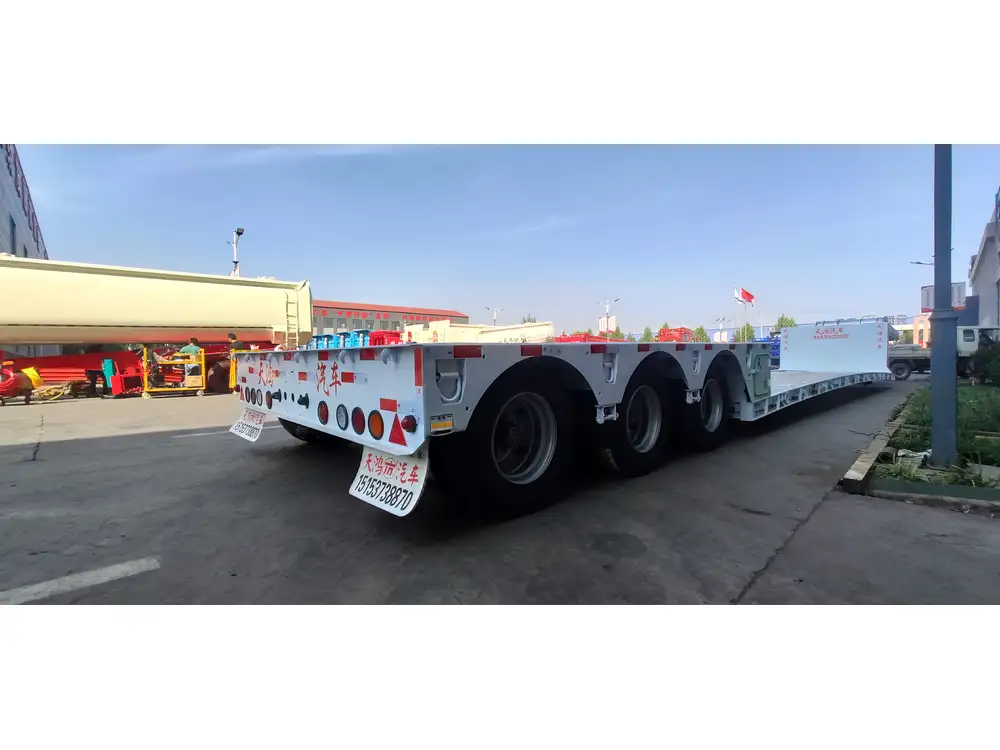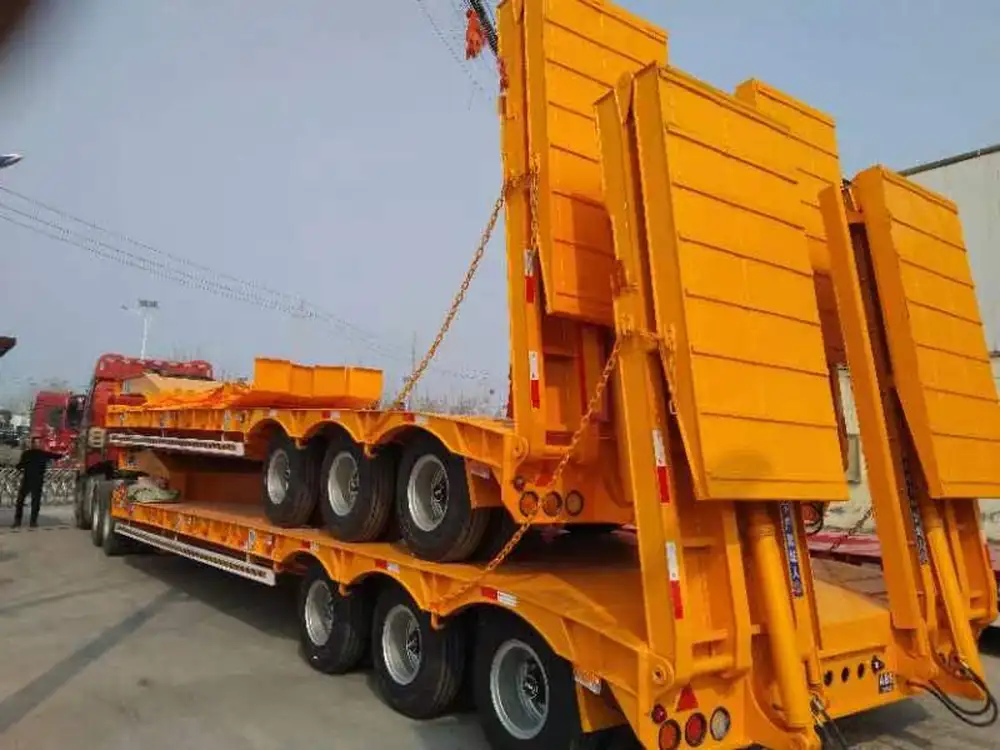Building walls on a flatbed trailer is a crucial modification for users who require enhanced functionality, security, and versatility in their transport solutions. Whether you’re transporting livestock, machinery, or building materials, erecting walls can provide the necessary protection and stability during transit. This article serves as a thorough guide for manufacturers and operators looking to effectively construct robust walls on flatbed trailers, ensuring compliance with safety standards and optimizing utility.
Understanding the Purpose of Walls on Flatbed Trailers
Walls on a flatbed trailer serve multiple purposes, which can be summarized as follows:
| Purpose | Description |
|---|---|
| Safety | Prevents cargo from shifting or falling off during transport, reducing accident risks. |
| Security | Deters theft and vandalism by concealing valuable cargo. |
| Versatility | Enables the transport of a wider variety of goods, including non-standard shapes. |
| Compliance | Meets regulatory requirements for transporting certain types of cargo safely. |
Essential Materials for Building Walls
When constructing walls on a flatbed trailer, choosing the right materials is paramount. Here’s a comprehensive list of options, along with their pros and cons:

1. Wood Panels
Pros:
- Cost-effective and easy to work with.
- Provides a natural aesthetic.
- Good for lighter loads.
Cons:
- Susceptible to rot and weather deterioration.
- Requires maintenance and regular treatment.
2. Metal Sheets
Pros:
- Highly durable and long-lasting.
- Offers excellent protection against impacts.
- Resistant to weather conditions.
Cons:
- Heavier than wood, which may affect trailer dynamics.
- Can be more expensive based on metal type (aluminum, steel, etc.).
3. Composite Materials
Pros:
- Combines durability of metal and the lightweight nature of plastic.
- Resistant to corrosion and does not require painting.
Cons:
- Higher initial investment than wood.
- Limited options for repairs if damaged.

4. Plastic Panels
Pros:
- Lightweight and resistant to moisture.
- Easy to clean and maintain.
Cons:
- Potentially less sturdy than wood or metal.
- May not provide sufficient security against heavy impacts.
Building Process: Step-by-Step Guide
Now that we have established the purpose and chosen materials, let’s delve into the step-by-step process of building walls on a flatbed trailer.
Step 1: Measure and Design
Before any physical construction begins, accurate measurements are crucial:
- Dimensions: Measure the height and length of the flatbed trailer, considering desired wall height.
- Load Consideration: Factor in the type of cargo you will be transporting to design proper wall supports.
- Draw Up Plans: Creating a schematic may help visualize the final product, indicating the arrangement of panels and supports.

Step 2: Gather Tools and Materials
Having the right tools on hand is essential. Here’s a structured list of what we will need:
| Tools | Purpose |
|---|---|
| Measuring Tape | For precise measurements |
| Power Drill | To anchor walls to the trailer base |
| Saw (Circular or Jigsaw) | To cut materials to size |
| Level | Ensures walls are straight and upright |
| Wrenches and Bolts | For securing metal panels or supports |
| Protective Gear | Safety goggles, gloves, and dust masks |
Step 3: Prepare the Trailer
Ensure the flatbed trailer is stable and clean:
- Clean the Surface: Clear any debris or obstructions that may impede wall installation.
- Inspect the Trailer: Check for any structural damages that may require repair before wall construction.
Step 4: Install the Wall Frame
The wall frame supports the panels:
- Cut Vertical Supports: Use 2×4 lumber for wooden walls, ensuring enough height for your design.
- Install Floor Supports: Attach horizontal members at the base of the wall frame to provide stability.
- Secure the Top Plate: Screw the top horizontal support into place, ensuring it is level.

Step 5: Attach Wall Panels
Once the frame is secure, it’s time to install the wall panels:
- Wood Panels: Fasten each panel using screws or nails to the frame, ensuring they are flush with the frame’s edges.
- Metal Sheets: Use bolts and washers to secure metal sheets to the frame for a tight fit.
- Plastic or Composite Panels: May require specialized screws designed for these materials.
Step 6: Finishing Touches
Consider these details to complete the installation:
- Seal Joints: For wooden walls, seal joints with weatherproof paint or sealant to prevent water damage.
- Add Reinforcements: For heavy loads, additional cross-bracing within the wall frame may be necessary.
- Paint or Treat: If using wood, apply a protective finish or paint to enhance durability.
Step 7: Safety Checks
Finally, ensure stability and compliance:
- Inspect the Installation: Verify that all panels are secure and there are no structural weaknesses.
- Test Stability: Apply gentle pressure to see if any panels budge or flex significantly.
- Check Compliance: Make sure that the height and design meet local regulations for transport.

Potential Issues to Consider
When constructing walls on a flatbed trailer, several potential issues may arise:
| Issue | Solution |
|---|---|
| Weight Distribution | Ensure even distribution of weight to maintain trailer balance. |
| Material Deterioration | Regularly inspect and maintain walls depending on the materials used. |
| Regulatory Compliance | Stay updated on local transportation regulations regarding trailer modifications. |
| Unexpected Loads | Design walls robustly to accommodate varied loads and prevent shifts. |
Conclusion
Building walls on a flatbed trailer is not just a matter of aesthetics; it’s about maximizing functionality, ensuring safety, and adhering to regulations. By following this detailed guide, manufacturers and users can effectively construct walls that meet their specific needs while ensuring compliance and durability.
Key Takeaways
- Material Choice is Crucial: Select the right materials based on the intended use, budget, and environment.
- Measure Twice, Build Once: Attention to detail during the measuring and planning phases will prevent costly errors later on.
- Regular Maintenance: Periodic checks will ensure longevity and security of the trailer walls.
- Understanding Local Regulations: This is vital for lawful operations and avoiding potential fines.
By adhering to these guidelines and considering best practices, stakeholders can significantly enhance their flatbed trailer’s functionality through effective wall construction. This not only provision cargo safety and stability, but it also adapts the trailer for diverse operational needs, ultimately yielding better performance and user satisfaction.



